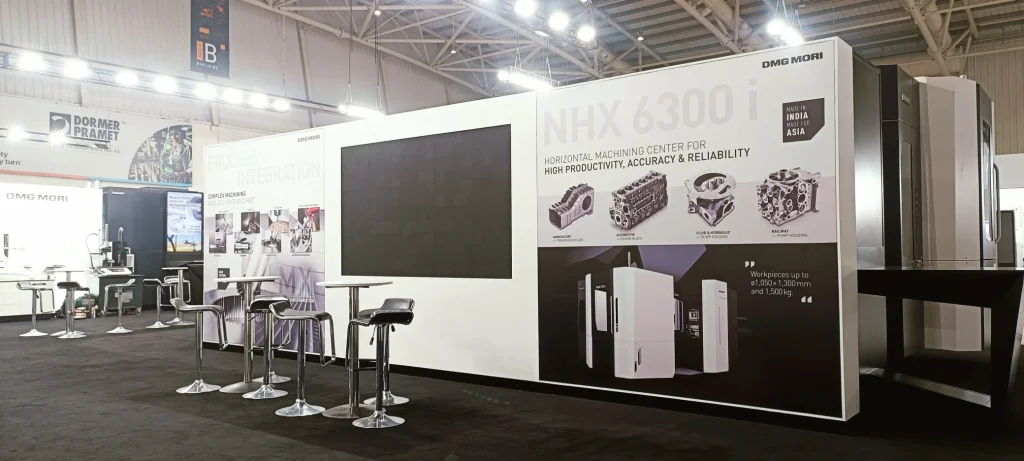
Introduction
In the bustling world of trade show exhibits, making a lasting impression often hinges on how effectively you can use your allocated space. For exhibitors with smaller booths, this challenge can seem daunting. However, innovative design strategies can transform limited spaces into captivating and functional exhibits. This article explores creative solutions for maximizing small booth spaces, ensuring that even the most compact setups can leave a big impact.
Maximizing Vertical Space:
- Tall Displays: Utilize the height of your booth by incorporating tall display units. These can serve as eye-catching focal points and provide ample space for showcasing products or brand messaging.
- Hanging Elements: Suspend signage, lighting, or decorative elements from the ceiling to draw attention and add a dynamic layer to your booth without consuming floor space.
- Shelving and Racks: Install shelves or racks along the walls to display products, literature, or promotional items vertically, freeing up valuable floor area.
Multifunctional Furniture:
- Convertible Pieces: Use furniture that serves multiple purposes, such as ottomans with hidden storage or tables that can be adjusted for different uses.
- Folding and Collapsible Furniture: Incorporate folding chairs, tables, and display units that can be easily set up and packed away, allowing for flexible space management.
- Stackable Seating: Stackable chairs or stools save space when not in use and can be easily brought out for meetings or presentations.
Efficient Layout Design:
- Open Layout: Create an open and inviting layout by minimizing large barriers and using smaller, strategically placed pieces of furniture to guide traffic flow.
- Zoning: Divide the booth into distinct zones for different activities, such as product displays, interactive demos, and meeting areas. Use subtle dividers or changes in flooring to delineate these spaces.
- Traffic Flow: Design your booth with clear entry and exit points to facilitate smooth visitor movement and prevent overcrowding.
Interactive and Digital Solutions:
- Touchscreens and Kiosks: Replace physical displays with digital touch screens or kiosks that can present information, showcase products, and engage visitors interactively.
- Virtual Reality (VR) and Augmented Reality (AR): Incorporate VR or AR experiences to provide immersive demonstrations without needing extensive physical setups.
- Tablets and Mobile Devices: Equip staff with tablets to present product catalogs, collect visitor information, and facilitate interactive experiences on the go.
Creative Display Techniques:
- Modular Displays: Use modular display systems that can be reconfigured to fit different spaces and purposes, allowing for flexibility and adaptability.
- Pop-Up Displays: Invest in portable, pop-up displays that can be quickly assembled and disassembled, making setup and teardown efficient and hassle-free.
- Lightweight Materials: Choose lightweight materials for your displays and furniture to make transport and setup easier while maintaining a sleek and modern appearance.
Engaging Visuals and Branding:
- Bold Graphics: Use large, bold graphics and clear branding to make your booth stand out from a distance. High-quality visuals can compensate for limited physical space.
- Consistent Branding: Ensure that all elements of your booth, from furniture to promotional materials, reflect your brand’s identity consistently.
- Lighting: Utilize strategic lighting to highlight key areas of your booth and create an inviting ambiance. LED lights, spotlights, and backlit displays can add depth and focus.
Conclusion:
Maximizing the potential of a small booth space at trade shows requires creativity, strategic planning, and innovative design solutions. By leveraging vertical space, multifunctional furniture, efficient layouts, and engaging digital tools, exhibitors can create impactful and memorable experiences for visitors.
Thoughtful use of visuals, consistent branding, and interactive elements can further enhance the appeal and effectiveness of a small booth. With these strategies, even the most compact spaces can deliver significant marketing impact, turning limitations into opportunities for standout success.


 US
US
 EU
EU


